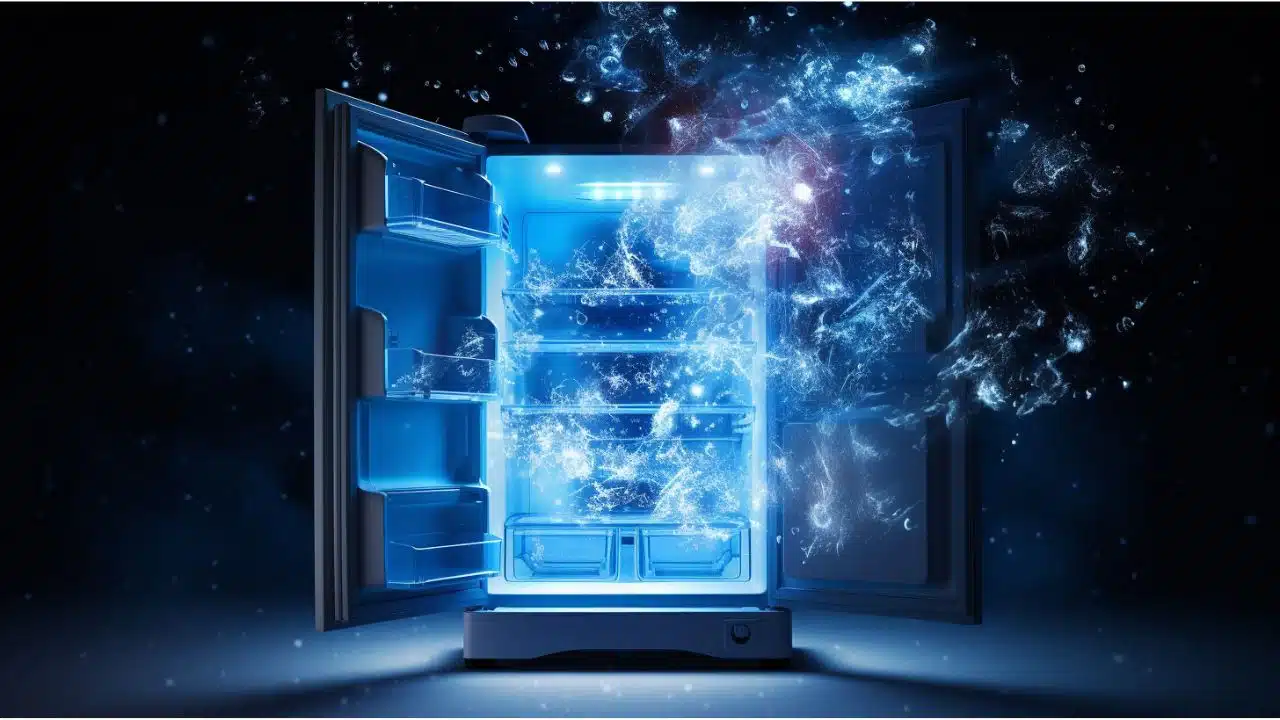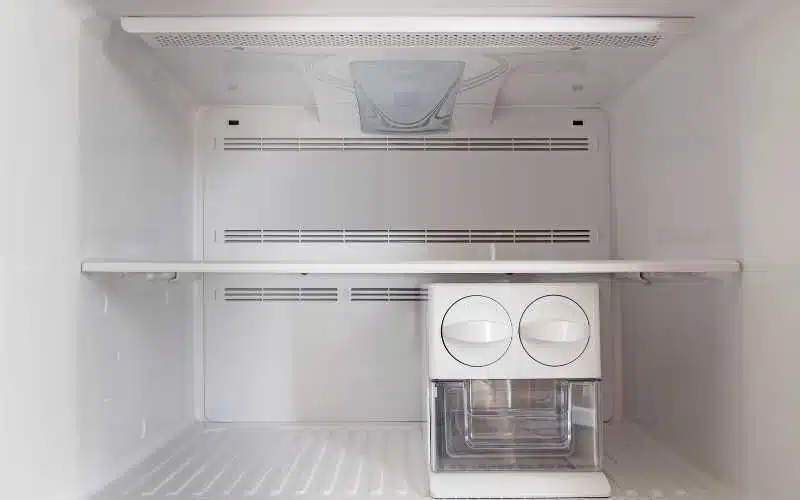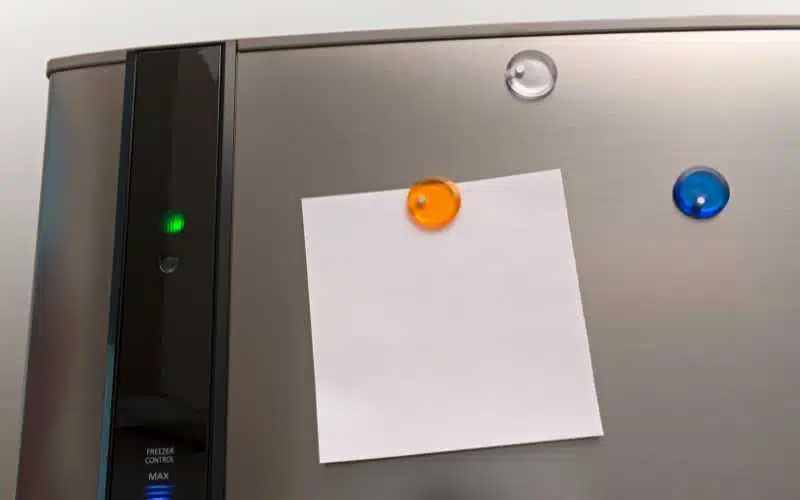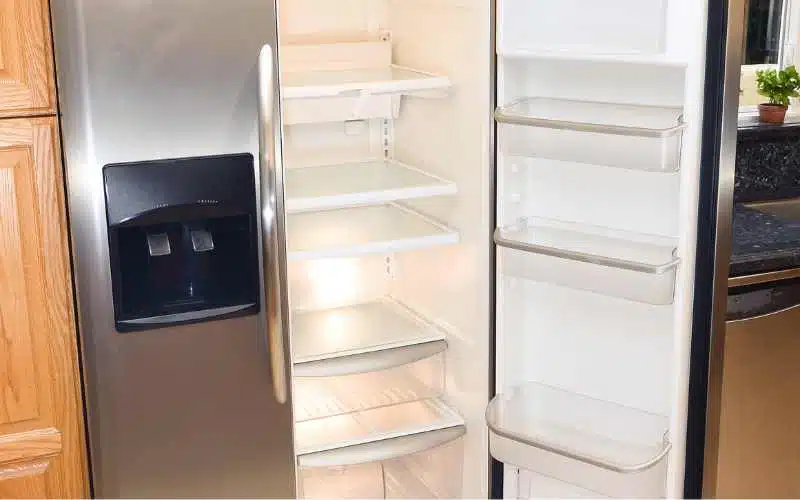Imagine opening your Samsung refrigerator to find a mysterious puddle of water inside. Strange, right? But here’s a secret: it could be all about the defrost drain, a hidden hero in your fridge.
This tiny part plays a big role in keeping your fridge frost-free and your food fresh. So, where exactly is this important piece hiding?
Let’s dive into the chilly world of refrigerators and uncover the secrets of the Samsung defrost drain location. Get ready for a cool adventure!
Key Solution to Water Puddle in Samsung Refrigerators:
- Defrost Drain Location: Find it at the base back inside the freezer. It’s crucial for preventing frost buildup.
- Regular Check: Ensure the defrost drain is not blocked to prevent ice accumulation and bad smells.
- DIY Cleaning: For the drip pan, use a blend of two parts water and one part bleach. Scrub and rinse thoroughly.
- Defrosting Tips: Unplug the fridge, keep doors open, and let ice melt naturally. Do not use external heat sources.
- Preventive Maintenance: Regularly empty and clean the drain pan to avoid overflow and maintain correct humidity levels.
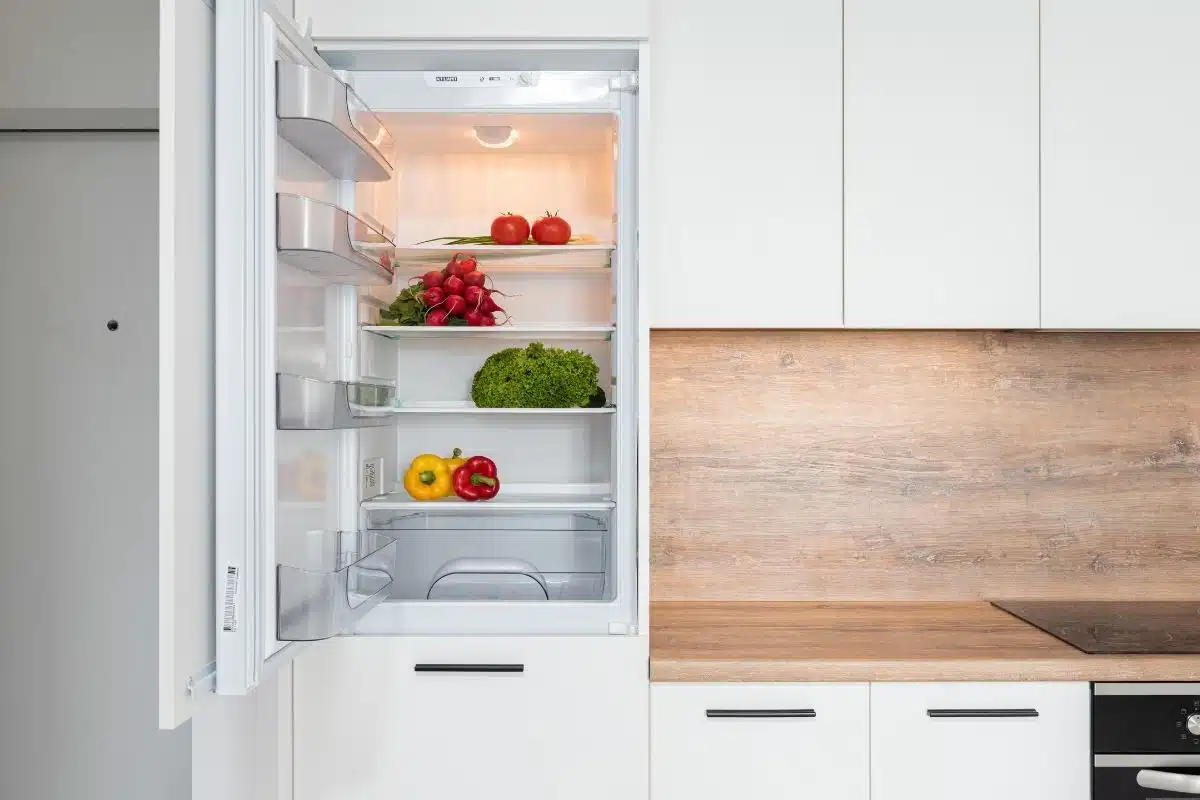
Defrost Drain Location on Samsung Refrigerator
Your Samsung refrigerator has a defrost drain that you can find at the base back inside the freezer. It plays a crucial role in preventing frost buildup.
Look closely near the bottom and you’ll see the defrost drain hole. This is where water flows down when the fridge goes through its defrost cycle.
- Inside the Freezer:
- At the bottom back
- Near the evaporator coils
- Outside the Freezer:
- The lower part of the access panel
- On the back wall of the fridge
If the defrost drain is clogged, your fridge might start to accumulate ice or emit bad smells. Don’t worry, you can check the drain hole yourself.
Do a regular check to ensure it’s not blocked. If it is, or if you notice ice where it shouldn’t be, it might be time to defrost the coils or call a technician for help. Remember, keeping this drain clear is key to a well-functioning fridge.
Steps To Empty Drain Pan On A Samsung Fridge!
1. Step One: Mop up the drip pan with a sanitizer or bleach solution.
Make your own cleaning mixture by blending two parts warm water with one part bleach.
Spray this cleaning solution generously over the drip pan. Allow it to sit for a couple of minutes, which helps kill germs and loosens any mold.
Cleaning Mixture Blending
- Mixture: 2 parts water, 1 part bleach
- Spray: Cover the pan completely
- Wait: Let the solution sit for 2-3 minutes
If you notice a color change, this might be due to the bleach. You might want to use vinegar instead if you’re concerned about harsh chemicals.
2. Step Two: Use a piece of cloth to scour the container and eliminate any build-up or mold.
After letting the solution sit, use a cloth to scrub the pan thoroughly. Be sure to remove all the build-up and mold to prevent it from spreading.
- Scrub: With a cloth, apply pressure to remove residue
- Avoid: Spreading mold – use paper towels if necessary
This step ensures that your drip pan is clean and free from things that should not be there.
3. Step Three: Rinse the drip pan with lukewarm water to get rid of any residue.
Next, thoroughly rinse the drip pan with warm water. Make sure all the cleaning solution and any loose dirt are washed away.
- Rinse: With lukewarm water until clean
- Check: For leftover residue and wipe clean
Your goal is to have a completely residue-free drip pan.
4. Step Four: Make sure the drip pan is dry before you reinstall it.
Dry the drip pan with a towel to eliminate all moisture. Moisture can lead to mold growth, so it’s important to get the pan completely dry.
- Dry: Use a towel to remove all moisture
- Inspect: Ensure the pan is entirely dry before reinstalling
When you’re sure the drip pan is dry, slide it back into place beneath your fridge. Always remember to disconnect your fridge before starting this process for your safety.
How To Defrost A Samsung Refrigerator?
To defrost your Samsung refrigerator, follow these steps carefully:
- Unplug your refrigerator or switch it off at the power source to start the defrosting process.
- Empty the freezer compartment of all contents.
- Keep the doors of the refrigerator and freezer open.
The defrost cycle will begin, and the ice will slowly melt away. This process takes patience, but it is safe for your appliance.
What You’ll Need:
- Towels or rags to soak up any excess water.
- Time; the process can take several hours.
Last update on 2024-01-04 / Affiliate links / Images from Amazon Product Advertising API
Defrost System Components:
- Defrost timer: Controls the timing of the defrost cycle.
- Defrost thermostat: Monitors the temperature during defrosting.
- Heater assembly: Helps to melt away frost.
Do Not Do:
- Do not use a hairdryer or any other external heat source to speed up the process. It’s unsafe.
- Avoid the force defrost function, as it may cause problems to your refrigerator.
Defrost Tips
- You can place bowls of hot water in the freezer compartment to help the ice melt faster.
- Ensure the defrost drain is clear to prevent water accumulation and leakage.
- After defrosting, dry the interior with a cloth before turning the fridge back on.
Defrost Mode: Some models have a defrost button; you can use it if you want to defrost without unplugging the fridge. Just press the button, and the defrost cycle will initiate.
Before Plugging Back In:
- Check the temperature settings on your refrigerator are correct.
- Confirm that the sensor and thermostat are not blocked by any ice remnants.
Remember, the self-defrosting freezers usually do not require manual defrosting. However, if you notice excessive ice buildup, you may need to defrost manually.
Always refer to your user manual for specific instructions on the defrosting process for your model.
Why Is There Water In The Bottom Of My Fridge?
Observing water at the bottom of your fridge often signifies a defrost problem. One common issue is a freezing defrost drain.
When it’s blocked by ice or debris, water cannot flow through. As a result, you see it pooling inside your fridge.
If your fridge features a water or ice dispenser, consider the water lines. These lines can sometimes break and cause leaks, with water pooling right at the bottom of the fridge.
To fix these problems, you can try several troubleshooting steps:
- Check for Blockages: Make sure the defrost drain isn’t frozen or clogged with food particles.
- Inspect Water Lines: If you have a dispenser, look for any damage to the lines.
Your fridge also has a drain pan, designed to collect water so it doesn’t end up on your kitchen floor. But if too much water enters the pan, it may overflow. Here’s what to do:
- Empty the Drain Pan: Regularly check and clean the pan to prevent overflow.
Remember, a little effort can prevent big problems. Keep the defrost drain clear, and you’ll avoid leaks and ice buildup. If the drain pan is full, simply clear it out.
These actions help maintain the right humidity levels and stop unwanted frost formation.

